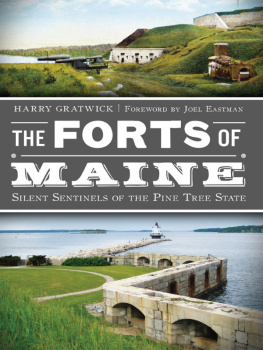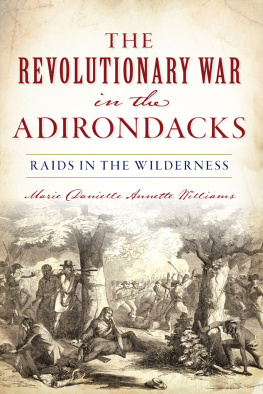Published by The History Press
Charleston, SC
www.historypress.net
Copyright 2017 by David M. Griffin
All rights reserved
Front cover, bottom: Halt at the Outpost, painting by Alfred Wordsworth Thompson, 1881. Public domain.
First published 2017
e-book edition 2017
ISBN 978.1.43966.161.1
Library of Congress Control Number: 2017941352
print edition ISBN 978.1.62585.853.5
Notice: The information in this book is true and complete to the best of our knowledge. It is offered without guarantee on the part of the author or The History Press. The author and The History Press disclaim all liability in connection with the use of this book.
All rights reserved. No part of this book may be reproduced or transmitted in any form whatsoever without prior written permission from the publisher except in the case of brief quotations embodied in critical articles and reviews.
ACKNOWLEDGEMENTS
There are many people I wish to thank for their great insight and assistance during my many months of research and writing. It has truly been an educational and inspiring time for me, and I have greatly expanded my comprehension of early Long Island history by sharing research with other colleagues, local historians and research librarians across the region. I am also grateful to all the historical societies of Long Island and the local history libraries, many of which helped me in my research. All combined, these institutions knit together our rich regional history and preserve our many historical sites and documents for future generations.
I would like to personally thank the Society for the Preservation of Long Island Antiquities (SPLIA) and its director, Alexandra Wolfe, for her support of my book in its early stages.
I gained great insight into the local history of Nassau County by speaking with Richard Ryan of the Walt Whitman Birthplace Association; Betsey Murphy, local historian at the Jericho Public Library; Claire Bellerjeau of the Raynham Hall Museum; John Hammond, the historian for the Town of Oyster Bay; and Harry Macy, former editor of the New York Genealogical and Biographical Record. I appreciate all of their efforts, thoughts and correspondence with me during my time of research.
Much appreciated are the historical documents, maps and the help of the staff at the William L. Clements Library at the University of Michigan in Ann Arbor, Michigan.
Appreciation is owed to the staff of the Long Island Studies Institute at Hofstra University for assisting me in my research of the Seth Norton Papers and other relative manuscripts of the period.
A thank-you to the Oyster Bay Historical Society, the Townsend Society and the historian of the Town of Huntington for assisting and supplying local history research on the Jericho, Oyster Bay and Huntington areas.
A very special thank-you to the great efforts and assistance provided by Steve Boerner, Andrea Meyer and Gina Piastuck of the Long Island Collection at the East Hampton Library. This collection is one of the best resources for the local history of Long Island and covers both Nassau and Suffolk Counties. The staff members are very knowledgeable and helpful and provide a great effort toward future preservation and the use of documents relative to Long Islands history.
A thank-you to the staff of the Rogers Memorial Library in Southampton for their help in my research of their collection of Long Island historical documents.
I am also grateful for the assistance provided by Mary Cummings of the Southampton Historical Museum and Zach Studenroth, town historian of the Town of Southampton. They both gave insight and documentation regarding the early history of the village of Southampton.
A thank-you to Susan Mullin of the John Jermain Library in Sag Harbor, who assisted me in collecting historical records about the village of Sag Harbor in the time of the American Revolution.
I am also grateful for the study and use of the collection of historical maps that has been digitized at Stony Brook University.
A thank-you to the staff at the Brooklyn Historical Society and the Othmer Library for their assistance regarding the Henry Onderdonk Papers. Onderdonks writings and research are truly inspiring, and the preservation of his manuscripts and scrapbooks is of great resource.
Much appreciated is the help of Imrie Risley Miniatures in providing work and information on the drawings of Clyde Risley. Risley was a master of illustrating the period and troops of the time.
Thanks also go to the the support of my personal friends. Special thanks to Michael Frisk of Stony Brook University for furthering my understanding of the maturity and growth of trees. These are great indicators of the passage of time.
A thank-you to Tracey Zabar for her support and expertise on book writing and her coaching on further author outreach.
Special thanks to William Salas of the Smithtown Public Library for his support. Thank you in advance for your assistance regarding future library outreach for the topic and the book.
I would like to thank The History Press for recognizing and supporting my interest and passion for the subject and affording me the opportunity to tell this important story. My hope is that this book is only the first step in my research of this subject in the Long Island region.
Appreciation is owed to my mother and father for taking me to all those historic sites when I was young and for creating my great curiosity for these sites and their geometries.
Lastly, a special thank-you to my loving wife, Jennifer, who supported me in all my efforts during the creation of this book.










